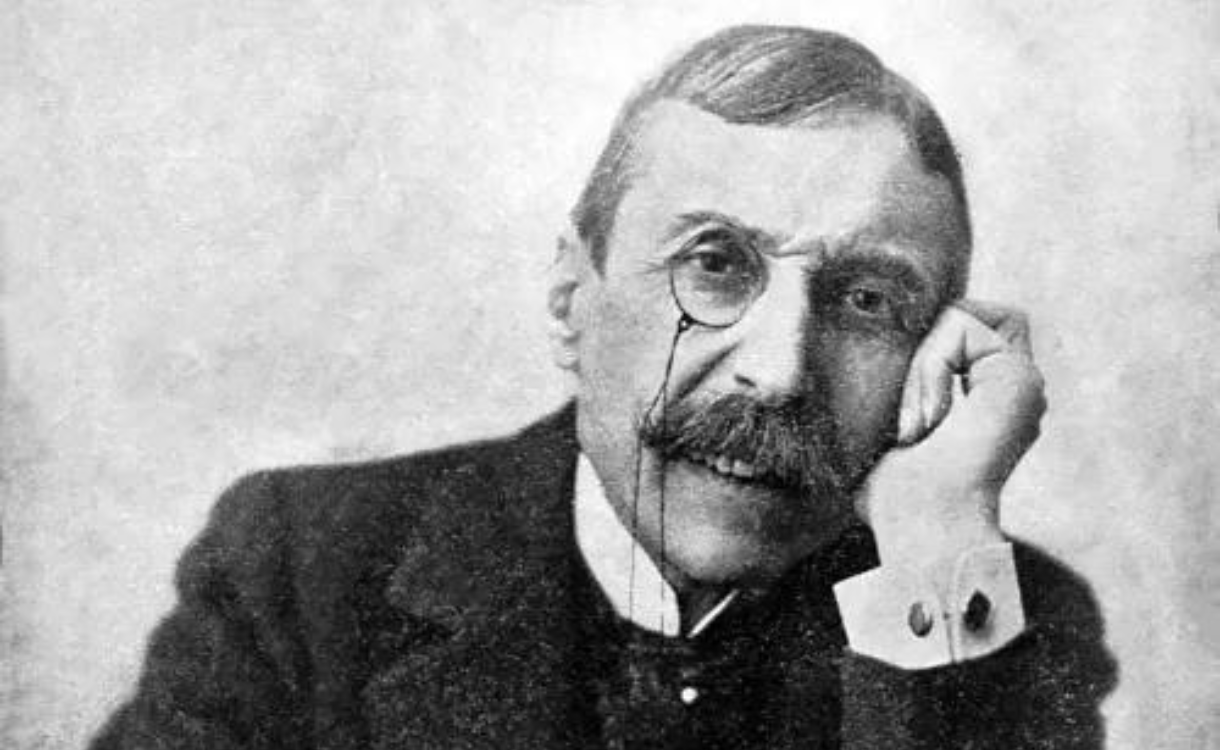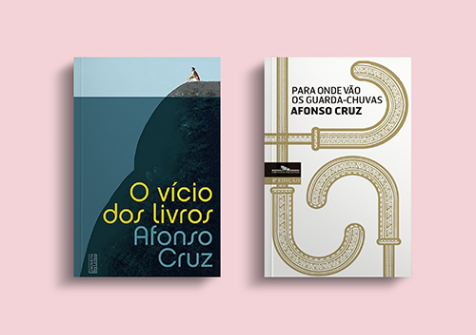Blog
04 of June of 2024
Eça Queirós writer

The title of this text seems inexpressive, given that Eça de Queirós is nothing other than a writer, a condition that raises no doubts. That title, however, refers to several less obvious aspects of the existence of this condition, some of which take on a special significance when analyzed in the context of this reflection.
This means that a writer like Eça would hardly be what he is without a publisher, because, in principle, he is an important part of literary production in general. Not that the writer can't be one himself, as has happened and happens (we're talking about author publishing here), including with Eça de Queirós, who handled the publishing process for A Relíquia himself. But that's not what usually happens.
Before I go any further, I'd like to remind you of something that isn't always properly considered: in his lifetime, Eça was a writer of few books, something that becomes clearer when we compare him, for example, with Camilo Castelo Branco. Between 1876, the date of the second version of O Crime do Padre Amaro, and 1900, the year he died, Eça published only six titles as an individual author: O Primo Basílio (1878), O Crime do Padre Amaro (1880; 3rd version), O Mandarim (1880), A Relíquia (1887), Os Maias (1888) and Uma Campanha Alegre. Das Farpas (1890-91; 2 vols.). The list increases slightly if we consider a co-authored book: O Mistério da Estrada de Sintra (1870, with Ramalho Ortigão).
However, at the time of Eça's death, on August 16, 1900, there were three of his works in very advanced editorial production or practically finished. I'm referring to the volumes A Correspondência de Fradique Mendes, A Ilustre Casa de Ramires and A Cidade e as Serras, titles of unquestionable relevance, but which, for the reason mentioned, should be considered semi-posthumous (all three were published by the then Livraria Chardron de Lello & Irmão). After these, there was the flow that we know: collections of press articles and scattered texts, fictional and travel accounts, private correspondence, etc. A vast list of posthumous editions was then created, again by Livraria Chardron de Lello & Irmão and also with the intervention of the writer's friends and family. From this list, the best-known titles are Contos (1902), Prosas Bárbaras (1903), A Capital (1925), O Conde de Abranhos (1925) and Alves & C.ª (1925).
What is left here does not, of course, exhaust the characterization of the Queirosian bibliographical field or the problems it involves. That's what the critical edition of Eça's works, currently being published by the Imprensa Nacional (22 titles so far) is all about, and it should hopefully serve as a matrix for other editions. What I want to emphasize now is this: during his lifetime, the writer Eça de Queirós maintained an intense relationship with his publishers, attested to in very significant epistolary dialogues, for example with Jules Genelioux and Mathieu Lugan.
These dialogues show an authorial personality who was always dissatisfied with the results of his artistic work and with some of the incidents surrounding the publishing of his books. Two cases in point: the first edition of Os Maias suffered considerable hardship; because of various incidents with the printer, part of Eça's great novel could have been lost. Case two: when the third edition of O Primo Basílio appeared in 1887, Eça complained bitterly to the publisher that he hadn't been allowed to make what he called, in a letter to Genelioux, a “revision of style”. The editor was probably aware that this “revision” really meant a total rewrite of the novel, going far beyond a simple reprint, as had happened with The Crime of Father Amaro. And so, O Primo Basílio could well be said to be somewhere between what Eça wanted and what the publisher wouldn't let him. However, this does not prevent it from being the great novel we know.
Article written by: Carlos Reis
Queirosiana” blog
https://queirosiana.wordpress.com/
Critical Edition of the Works of Eça de Queirós
https://imprensanacional.pt/collection/ed-critica-de-eca-de-queiros/
This means that a writer like Eça would hardly be what he is without a publisher, because, in principle, he is an important part of literary production in general. Not that the writer can't be one himself, as has happened and happens (we're talking about author publishing here), including with Eça de Queirós, who handled the publishing process for A Relíquia himself. But that's not what usually happens.
Before I go any further, I'd like to remind you of something that isn't always properly considered: in his lifetime, Eça was a writer of few books, something that becomes clearer when we compare him, for example, with Camilo Castelo Branco. Between 1876, the date of the second version of O Crime do Padre Amaro, and 1900, the year he died, Eça published only six titles as an individual author: O Primo Basílio (1878), O Crime do Padre Amaro (1880; 3rd version), O Mandarim (1880), A Relíquia (1887), Os Maias (1888) and Uma Campanha Alegre. Das Farpas (1890-91; 2 vols.). The list increases slightly if we consider a co-authored book: O Mistério da Estrada de Sintra (1870, with Ramalho Ortigão).
However, at the time of Eça's death, on August 16, 1900, there were three of his works in very advanced editorial production or practically finished. I'm referring to the volumes A Correspondência de Fradique Mendes, A Ilustre Casa de Ramires and A Cidade e as Serras, titles of unquestionable relevance, but which, for the reason mentioned, should be considered semi-posthumous (all three were published by the then Livraria Chardron de Lello & Irmão). After these, there was the flow that we know: collections of press articles and scattered texts, fictional and travel accounts, private correspondence, etc. A vast list of posthumous editions was then created, again by Livraria Chardron de Lello & Irmão and also with the intervention of the writer's friends and family. From this list, the best-known titles are Contos (1902), Prosas Bárbaras (1903), A Capital (1925), O Conde de Abranhos (1925) and Alves & C.ª (1925).
What is left here does not, of course, exhaust the characterization of the Queirosian bibliographical field or the problems it involves. That's what the critical edition of Eça's works, currently being published by the Imprensa Nacional (22 titles so far) is all about, and it should hopefully serve as a matrix for other editions. What I want to emphasize now is this: during his lifetime, the writer Eça de Queirós maintained an intense relationship with his publishers, attested to in very significant epistolary dialogues, for example with Jules Genelioux and Mathieu Lugan.
These dialogues show an authorial personality who was always dissatisfied with the results of his artistic work and with some of the incidents surrounding the publishing of his books. Two cases in point: the first edition of Os Maias suffered considerable hardship; because of various incidents with the printer, part of Eça's great novel could have been lost. Case two: when the third edition of O Primo Basílio appeared in 1887, Eça complained bitterly to the publisher that he hadn't been allowed to make what he called, in a letter to Genelioux, a “revision of style”. The editor was probably aware that this “revision” really meant a total rewrite of the novel, going far beyond a simple reprint, as had happened with The Crime of Father Amaro. And so, O Primo Basílio could well be said to be somewhere between what Eça wanted and what the publisher wouldn't let him. However, this does not prevent it from being the great novel we know.
Article written by: Carlos Reis
Queirosiana” blog
https://queirosiana.wordpress.com/
Critical Edition of the Works of Eça de Queirós
https://imprensanacional.pt/collection/ed-critica-de-eca-de-queiros/



.png)